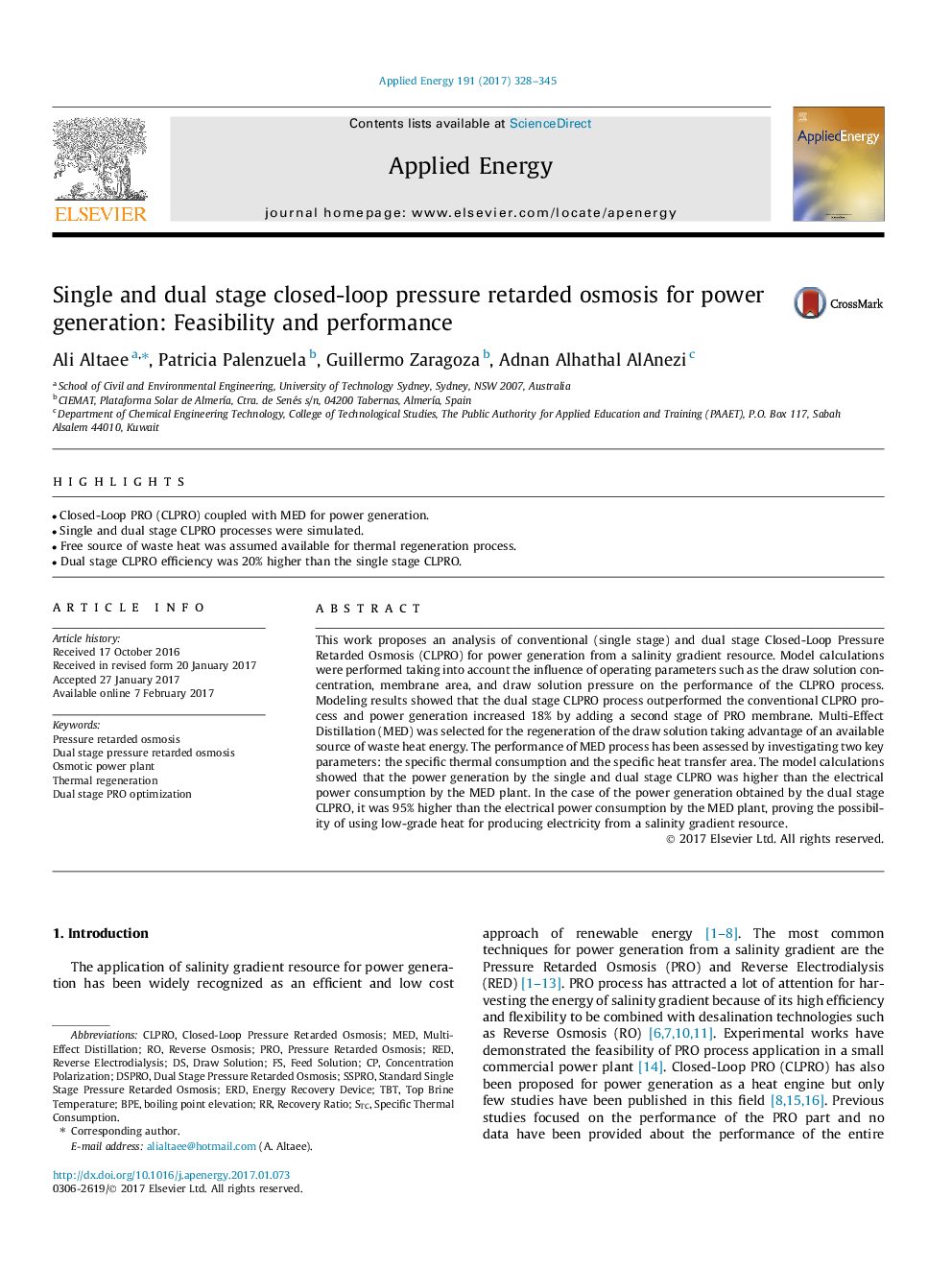| Article ID | Journal | Published Year | Pages | File Type |
|---|---|---|---|---|
| 6478754 | Applied Energy | 2017 | 18 Pages |
â¢Closed-Loop PRO (CLPRO) coupled with MED for power generation.â¢Single and dual stage CLPRO processes were simulated.â¢Free source of waste heat was assumed available for thermal regeneration process.â¢Dual stage CLPRO efficiency was 20% higher than the single stage CLPRO.
This work proposes an analysis of conventional (single stage) and dual stage Closed-Loop Pressure Retarded Osmosis (CLPRO) for power generation from a salinity gradient resource. Model calculations were performed taking into account the influence of operating parameters such as the draw solution concentration, membrane area, and draw solution pressure on the performance of the CLPRO process. Modeling results showed that the dual stage CLPRO process outperformed the conventional CLPRO process and power generation increased 18% by adding a second stage of PRO membrane. Multi-Effect Distillation (MED) was selected for the regeneration of the draw solution taking advantage of an available source of waste heat energy. The performance of MED process has been assessed by investigating two key parameters: the specific thermal consumption and the specific heat transfer area. The model calculations showed that the power generation by the single and dual stage CLPRO was higher than the electrical power consumption by the MED plant. In the case of the power generation obtained by the dual stage CLPRO, it was 95% higher than the electrical power consumption by the MED plant, proving the possibility of using low-grade heat for producing electricity from a salinity gradient resource.
